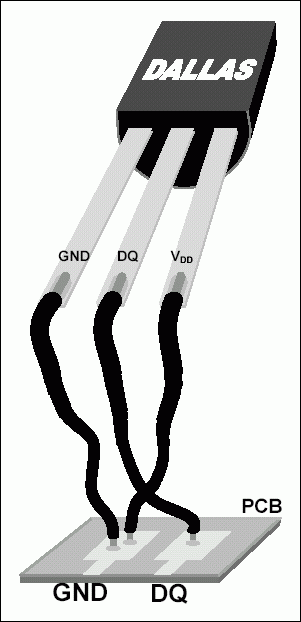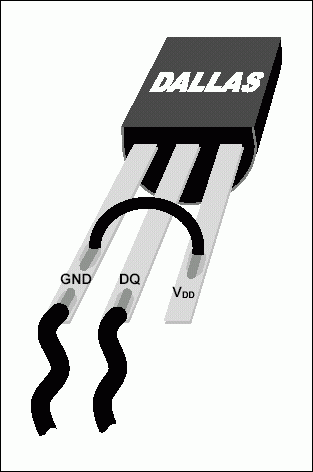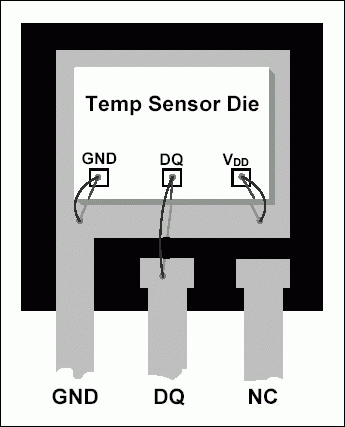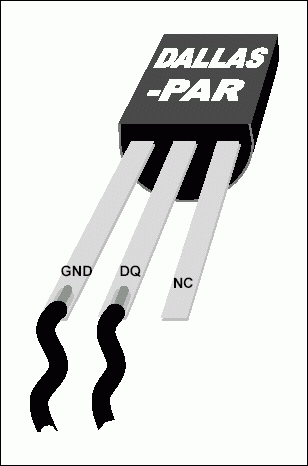Introduction
The DS18B20-PAR, DS18S20-PAR, and DS1822-PAR parasite-power 1-Wire digital temperature sensors are ideal for use in remote temperature-sensing applications where space constraints or lack of accessibility make it impractical to use a local power supply. "Parasite power" is a feature of most 1-Wire devices, which allows them to derive power directly from the data line. The -PAR temperature sensor ICs can greatly simplify the mechanical aspects of implementing parasite power in remote applications, as compared to the DS18B20, DS18S20, and DS1822.The "-PAR" Advantage
When using the DS18B20, DS18S20, and DS1822 1-Wire temperature sensors in parasite-power mode, the VDD pin must be connected to ground (GND) for correct operation. In applications where the sensors are attached directly to a printed circuit board, connecting the VDD pin to GND is a simple matter. However, in applications where the temperature sensor is located at a remote location from the control circuit (e.g., in a temperature probe), this connection can present some mechanical difficulties. In this case there are two ways to make the required connection: run three wires to the temperature sensor and connect the VDD wire to GND at the circuit board (see Figure 1), or connect the VDD pin to the GND pin at the device (see Figure 2). Unfortunately, the first approach adds expense by requiring a wire for the VDD connection, which is of particular concern if the wires must span long distances, and the second approach is a mechanically awkward solution.
Figure 1. 1-Wire temperature sensor with VDD pin connected to GND at PCB.

Figure 2. 1-Wire temperature sensor with VDD pin locally connected to GND.
To solve this problem, Dallas created the DS18B20-PAR, DS18S20-PAR, and DS1822-PAR. These devices are identical to the DS18B20, DS18S20, and DS1822 except that VDD is internally connected to GND (see Figure 3). Therefore, the three -PAR devices make it simple to implement remote parasite-power operation with minimal wiring or connections (see Figure 4).

Figure 3. Cutaway view of -PAR temperature sensor.

Figure 4. -PAR wiring configuration.
Note that due to increased DQ pin leakage current at high temperatures, the DS18B20-PAR, DS18S20-PAR, and DS1822-PAR have a maximum operational temperature of +100°C. The same is true for the DS18B20, DS18S20, and DS1822 when operated in parasite-power mode.
If you require further information about the DS18B20-PAR, DS18S20-PAR, or DS1822-PAR, or any other Dallas temperature sensor, please contact <script language=javascript> var name = "Thermal.Support@"; var domain = "dalsemi.com"; document.write ("" + name + domain + ""); </script>[email protected]. DS18B20-PAR, DS18S20-PAR, or DS1822-PAR data sheets can be downloaded from the Maxim website at www.maxim-ic.com.